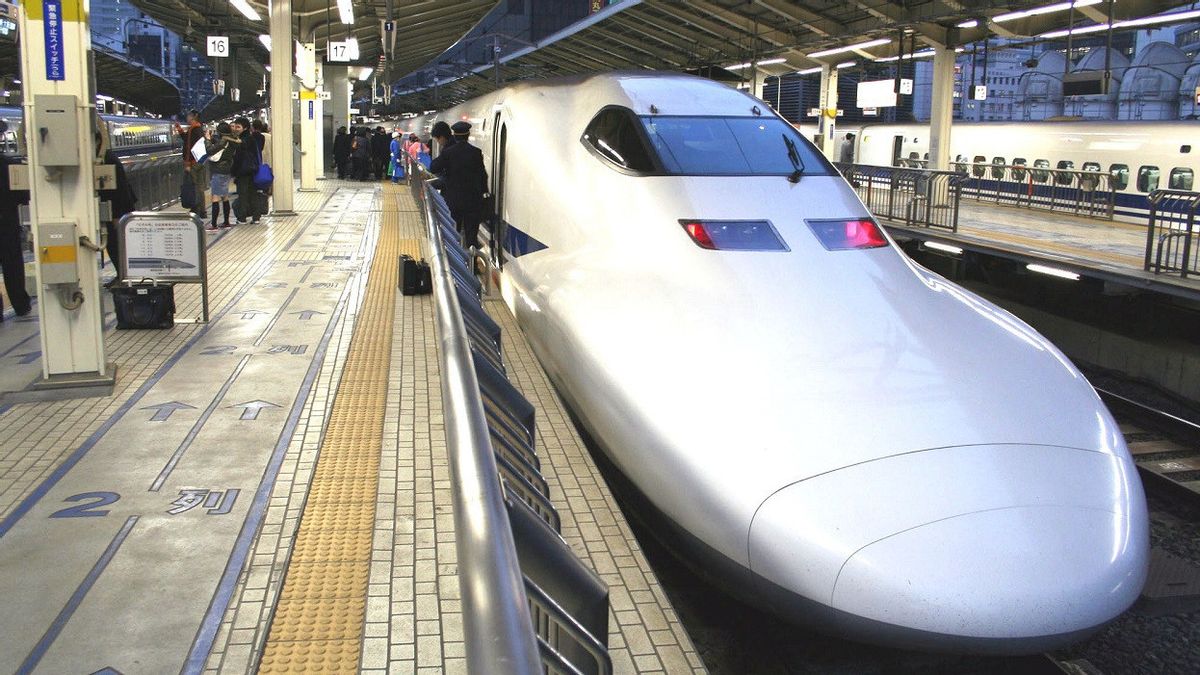JAKARTA - A Shinkansen bullet train driver leaves the cockpit to use the bathroom, as the train travels at 150 kilometers per hour with about 160 passengers on board in central Japan.
The 36-year-old driver exited the cockpit of the Hikari No. 633 train for about three minutes, after asking a conductor to replace him during his absence at around 8.15am on Sunday.
"The train runs between Atami station and Mishima station in Shizuoka Prefecture. The conductor does not have a permit to drive the bullet train,' Central Japan Railway Co., as reported by Kyodonews, Friday, May 21.
The operator of the Tokaido Shinkansen Line connecting Tokyo and Shin-Osaka said the incident was the first time a masisnis had left the cockpit as the train was speeding with passengers inside.
According to the company, the driver felt abdominal pain. The conductor then sits in the cockpit seat as long as the driver is not there, without operating the train.
JR Central reported the incident to the Ministry of Land, Infrastructure, Transport and Tourism, saying it was a violation of ministry regulations.
'It was a very inappropriate act. We apologize," jr Central senior official Masahiro Hayatsu said, following the report.
Although Japanese bullet trains can run while slowing down gradually if there is no driver, they automatically stop in an emergency. The company is considering taking punitive action against drivers and conductors.
"It is regrettable that government regulations are not fully adhered to" and "safety is a priority because (bullet trains) carry people's lives," Japan's Transport Ministry said in a statement.
The Tokaido Shinkansen Line, Japan's busiest bullet train line, is an exclusive route for high-speed trains, with no commuter or conventional trains sharing the same line. Trains on the line are traveling at top speeds of up to 285 kph, according to JR Central's official website.
Under JR Central rules, drivers who experience health problems while operating a bullet train are expected to report the problem to the operations center and hand over the controls to a conductor who has a driver's license or stop the train at a nearby station.
The incident came to light after the company noticed delays on the route, with the Shin-Osaka express train late passing through Mishima station about a minute from schedule.
During the trial on the matter, the driver initially claimed to have no recollection of what happened because of his stomach pains. However, the footage in the cockpit confirms his absence.
"I want to avoid train delays by stopping it (at the nearest station)," he was quoted as saying by the company.
For the record, Japanese railways, including bullet trains, are known for timely operation, with delays of even a few minutes being a major problem for operators and media surveillance targets.
The English, Chinese, Japanese, Arabic, and French versions are automatically generated by the AI. So there may still be inaccuracies in translating, please always see Indonesian as our main language. (system supported by DigitalSiber.id)













